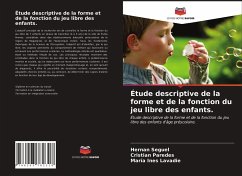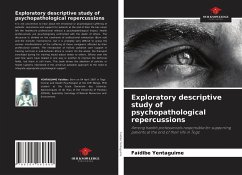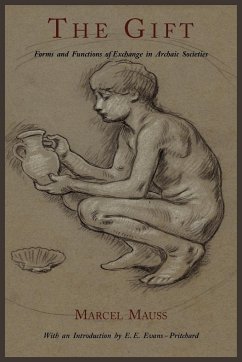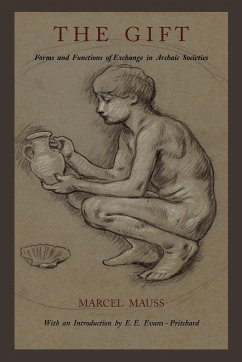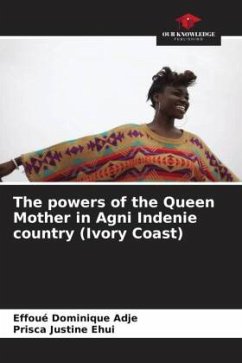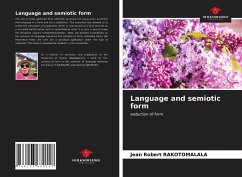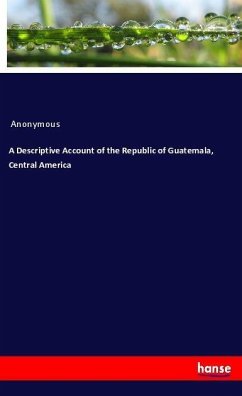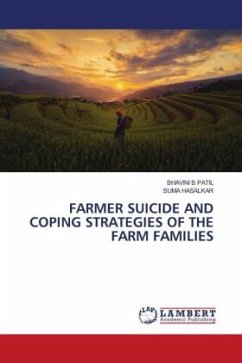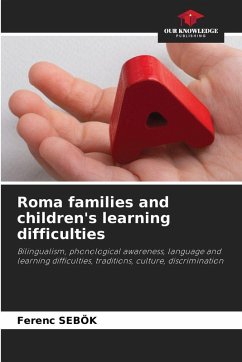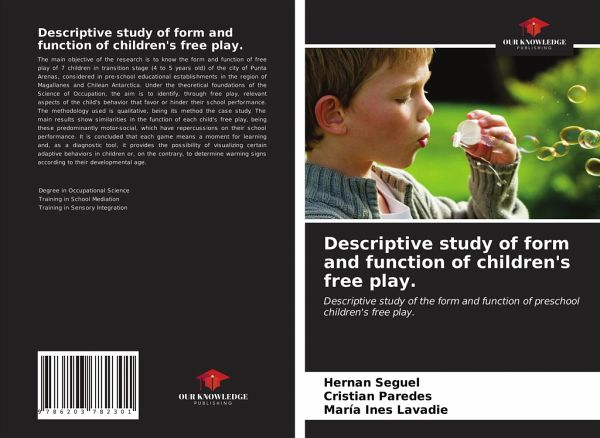
Descriptive study of form and function of children's free play.
Descriptive study of the form and function of preschool children's free play.
Versandkostenfrei!
Versandfertig in 6-10 Tagen
41,99 €
inkl. MwSt.

PAYBACK Punkte
21 °P sammeln!
The main objective of the research is to know the form and function of free play of 7 children in transition stage (4 to 5 years old) of the city of Punta Arenas, considered in pre-school educational establishments in the region of Magallanes and Chilean Antarctica. Under the theoretical foundations of the Science of Occupation, the aim is to identify, through free play, relevant aspects of the child's behavior that favor or hinder their school performance. The methodology used is qualitative, being its method the case study. The main results show similarities in the function of each child's f...
The main objective of the research is to know the form and function of free play of 7 children in transition stage (4 to 5 years old) of the city of Punta Arenas, considered in pre-school educational establishments in the region of Magallanes and Chilean Antarctica. Under the theoretical foundations of the Science of Occupation, the aim is to identify, through free play, relevant aspects of the child's behavior that favor or hinder their school performance. The methodology used is qualitative, being its method the case study. The main results show similarities in the function of each child's free play, being these predominantly motor-social, which have repercussions on their school performance. It is concluded that each game means a moment for learning and, as a diagnostic tool, it provides the possibility of visualizing certain adaptive behaviors in children or, on the contrary, to determine warning signs according to their developmental age.The main objective of the research is to know the form and function of free play of 7 children in transition stage (4 to 5 years old) of the city of Punta Arenas, considered in pre-school educational establishments in the region of Magallanes and Chilean Antarctica. Under the theoretical foundations of the Science of Occupation, the aim is to identify, through free play, relevant aspects of the child's behavior that favor or hinder their school performance. The methodology used is qualitative, being its method the case study. The main results show similarities in the function of each child's free play, being these predominantly motor-social, which have repercussions on their school performance. It is concluded that each game means a moment for learning and, as a diagnostic tool, it provides the possibility of visualizing certain adaptive behaviors in children or, on the contrary, to determine warning signs according to their developmental age.



